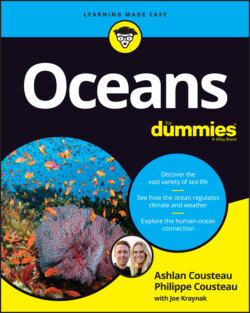Читать книгу Oceans For Dummies - Joseph Kraynak - Страница 66
The Neogene period
ОглавлениеThe Neogene period (from 23 to 2.6 million years ago) is divided into the Miocene and Pliocene epochs, but don’t worry we’re not going to slice and dice this period. Here are some of the highlights:
Desmostylia (that crazy sea rhino thing) goes extinct.
Kelp makes its debut by forming its own kelp forests.
Aquatic sloths and sea otters appear.
Cetaceans (whales and dolphins) become more diverse in correlation with the increase of giant marine predators such as megatooth sharks and predatory sperm whales.
The continents are pretty much where they are today. North and South America are connected with a land bridge, enabling the Great American Biotic Interchange — when species moved freely between the two continents (open borders anyone?).
Plant and animal species begin to take on a more modern appearance, and most modern bird groups are established.
The first apes evolve from old world monkeys.
Early human ancestors, such as Australopithecus, introduce themselves and demonstrate their ability to create and use stone tools (Stone axes? Awesome).
The megalodon arrives. (We’re not afraid of sharks, but we wouldn’t want to swim with a megalodon even if we were holding a stone axe.)
Our human ancestors from the genus Homo arrive.
This period ends with the beginning of an ice age — a very long cold spell characterized by the expansion of continental and polar ice sheets and alpine glaciers.
